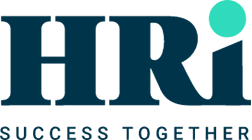Latest from HRi
Why keeping a tight focus on diversity and inclusion is more important than ever.
Businesses are doing whatever they need to do to survive the ongoing pandemic. Leaders are under tremendous pressure to weather this storm by looking at their costs, staffing and the services and products they are offering clients. In this climate, it’s easy to push other priorities to one side and leave anything proactive until things are calmer.
The most worrying thing is the impact the current climate is having on any progress made with the diversity agenda. We know that women shouldered the burden of homeschooling and caring responsibilities during the last lockdown. Economists are predicting gender equality could take us back a whole generation in terms of gender equality.
How leaders behave during challenging times can make the difference to how you emerge out of this crisis.
Diverse cognitive thinking
If there was ever a time when new ideas and approaches were needed it is now. Leadership teams need to determine the path, be innovative, and inspire their teams to survive. The issue at the moment is that many leadership teams have been put together based on their experience in a similar role or organisation resulting in ‘groupthink’ where there is a lack of different opinions on how the world works. A great way to address a lack of diversity in the leadership team right now is to try allocating each team member a different hat and viewpoint when tackling issues to encourage diverse thinking.
Leaders can also encourage diversity of thought throughout their organisation. Why not task your teams or set up cross departmental teams to brainstorm potential scenarios and solutions the organisation is facing? Not only does this encourage innovation and creativity, it builds relationships across the organisation and gives everyone a voice.
Restructuring
It is inevitable that many organisations will need to review their structure and cost base. The Institute for Employment Studies (IES) has published research which estimates the UK could see 450,000 redundancies this autumn and this could potentially reach 735,000.
Adding further worry to this is the belief held by many that minority and vulnerable groups will be disproportionately affected, with a quarter of people surveyed in London reporting that groups including older employees, women and visible ethnic minorities had been targeted. This may be down to the sectors and roles that have a higher level of minority groups working in, but it can also come down to how redundancy processes are conducted, with businesses believing the selection processes they are using are neutral when this is not always the case.
Whilst most employers work hard to ensure this doesn’t happen, the issue is where unconscious bias creeps into the decision making. Here are our tips to prevent this:
- Take the Harvard Implicit Association Test (IAT) which highlights our biases and how these can unconsciously impact our decision making process.
- Bring that self awareness into drafting new job descriptions, using neutral language, eg avoid a long list of desirable attributes as research shows women are less likely to apply unless they can meet each and everyone of these. Imposter syndrome is a barrier for many.
- Challenge yourself about whether your own unconscious bias shaped any of the role requirements, eg would a jobshare really not work, or is this just because you have never worked on this basis?
- When employees reapply for their roles, ensure more than one person interviews them to avoid similarity bias, where we tend to be more favourable to those similar to us.
- When you post articles on social media or your website, take care to ensure any imagery you use does not reflect the past (men in suits shaking hands) or women with babies in the workplace.
The importance of storytelling for leaders
We have established how the business case has helped drive diversity and inclusion forward but it’s important to remember that for it to become part of the culture of an organisation, there needs to be an emotional connection . This is important not just for those who may be identified in a minority group, but also for those in a majority group who don’t feel diversity is relevant to them.
This is where leaders sharing their own stories can make a huge difference. Sharing stories with your teams promotes high engagement, builds trust, and also encourages and facilitates meaningful discussion about how to be more inclusive.
Approaching diversity and inclusion storytelling as a leader can be daunting but there are a few key things to think about to help you see yourself through a diversity lens:
- When have you felt different to the rest of a group?
- When have you felt did not belong to a particular group?
- When have you felt you needed to either hide or emphasise a particular attribute to fit into a group?
This can then be built into a story by thinking about the who, what, where, when, and how, with a beginning, a middle and an end.
Once you have your story, it’s about getting it out there so look for opportunities to share this. Do you have regular staff briefings (albeit virtual for many at the moment), or a regular staff newsletter? By encouraging all leaders to do this, you will find you already have a range of diverse stories to tell.
To conclude
Whilst you continue to respond to and survive the current climate, it is crucial to ensure diversity and inclusion remains a priority for your business. Not only will this help you weather the current storm, it will maximise the likelihood of the survival of your business and set you up to bounce back with a committed and diverse team when we come out the other side.
Click here to access the HRi brokering service where we can match you with a suitable diversity and inclusion specialist.
Author: Katy McMinn, Co-Founder & Director of HR Independents.
